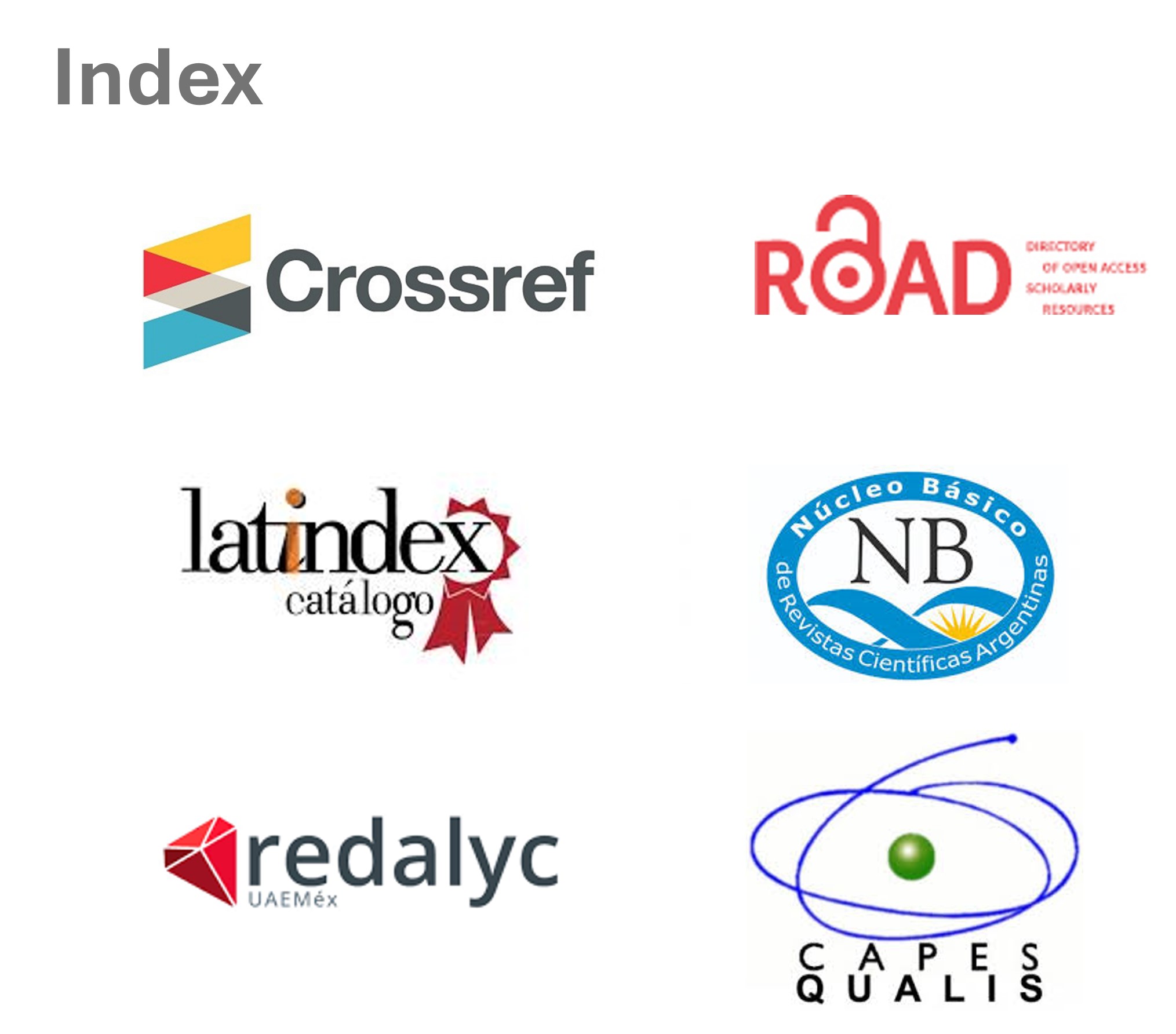Brechas de género en la ciencia. Un análisis de los proyectos de investigación de las Universidades radicadas en la Provincia de Buenos Aires
DOI:
https://doi.org/10.48160/18517072re58.362Palabras clave:
brecha de género, ciencia y tecnología, universidadesResumen
Este trabajo analiza las brechas de género en la actividad de ciencia y tecnología (CyT) de las universidades de gestión pública (UUPP) radicadas en la Provincia de Buenos Aires (PBA). Se analiza la segregación ocupacional mediante la composición y roles de los equipos de investigación y la distribución de varones y mujeres entre áreas disciplinares. Se construyó una base de datos con información a nivel de integrantes y área disciplinar de los proyectos de investigación radicados en las UUPP de la PBA. La muestra incluye información sobre 2401 proyectos de investigación y 12310 personas (20 de 24 UUPP). Los resultados muestran la existencia de segregación vertical y horizontal en la CyT en las UUPP de la PBA. Las mujeres tienen menor probabilidad de dirigir proyectos de las ciencias exactas y naturales y en las ciencias agrarias e ingenierías, respecto de las ciencias sociales. La cantidad proporcional de mujeres en la muestra es 3 puntos porcentuales menor que la cantidad de mujeres que dirigen proyectos a nivel nacional. Esta diferencia aumenta cuando los equipos son dirigidos por varones. Destacamos la necesidad de seguir incorporando la perspectiva de género de manera transversal en la CyT para disminuir hasta erradicar las brechas sexo-genéricas.
Citas
Bukstein, D. y Gandelman, N. (2019). Glass ceilings in research: Evidence from a national program in Uruguay. Research Policy, 48(6), 1550–1563.
Carrillo, P., Gandelman, N. y Robano, V. (2014). Sticky floors and glass ceilings in Latin America. Journal of Economic Inequality, Vol. 12(3), pp. 339-361, https://doi.org/10.1007/s10888-013-9258-3
Cole, J. R. y Zuckerman, H. (1984). The Productivity Puzzle: persistence and change in patterns of publication among men and women scientists. In M. W. Steinkamp y M. Maehr (Eds.), Advances in Motivation and Achievement (Volume 2, pp. 217–258). JAI Press inc.
D’Onofrio, M. G. y Tignino, M. V. (2018). Indicadores diagnósticos sobre la situación de las mujeres en ciencia y tecnología en Argentina y Banco de acciones en género y ciencia. Taller Mujeres En Ciencia y Tecnología: Hacia Una Participación Con Equidad.
Espino, A. (2010). Economía feminista: enfoques y propuestas. Serie Documentos de Trabajo/FCEA-IE; DT05/10.
Fiorentin, F. y Suarez, D. (2021). Género, economía y producción de conocimiento: Reflexiones en torno a la transversalización en el mundo post-COVID19.
Fiorentin, F., Pereira, M. y Suarez, D. (2022). The Gender Gap in Public S&T Funding (IDB-WP-1 26 7; IDB WORKING PAPER).
Goren, N. (2021). Mercado de Trabajo. In S. Gamba & T. Diz (Eds.), Nuevo diccionario de estudios de género y feminismos (pp. 412–416). Argentina, Biblos.
Goren, N. (2022). Trabajo femenino, una historia de desigualdades persistentes. Voces En El Fénix, 87, pp. 44–51.
Goren, N., Maldovan Bonelli, J., Dzembrowski, N., Mingo, E., Ferrón, G., Alvarez Newman, D., Gorban, D., Corradi, F. y Figueroa, Y. (2020). La situación de los/as trabajadores/os ocupados/as de la provincia de Buenos Aires ante las medidas de ASPO.
Guarino, C. M. y Borden, V. M. H. (2017). Faculty Service Loads and Gender: Are Women Taking Care of the Academic Family? Research in Higher Education, 58(6), pp. 672–694. https://doi.org/10.1007/s11162-017-9454-2
Haraway, D. (1995). Conocimientos situados: la cuestión científica en el feminismo y el privilegio de la perspectiva parcial. Ciencia, Cyborgs y Mujeres. La Reinvención de La Naturaleza, 14, pp. 313–346.
Harding, S. (1995). Can feminist thought make economics more objective? Feminist Economics, 1(1), pp. 7–32.
Keller, E. F. (2001). Reflexiones sobre género y ciencia (fragmento). Asparkía. Investigació Feminista, 12, pp. 149–153.
Lawson, C., Geuna, A. y Finardi, U. (2021). The funding-productivity-gender nexus in science, a multistage analysis. Research Policy, 50(3). https://doi.org/10.1016/j.respol.2020.104182
León, L. R., Mairesse, J. y Cowan, R. (2017). Gender Gaps and Scientific Productivity in Middle-Income Countries. Evidence from Mexico. IDB Working Paper Series ; 800.
Magua, W., Zhu, X., Bhattacharya, A., Filut, A., Potvien, A., Leatherberry, R., Lee, Y.-G., Jens, M., Malikireddy, D. y Carnes, M. (2017). Are female applicants disadvantaged in National Institutes of Health peer review? Combining algorithmic text mining and qualitative methods to detect evaluative differences in R01 reviewers’ critiques. Journal of Women’s Health, 26(5), pp. 560–570.
Mauleón, E. y Bordons, M. (2006). Productivity, impact and publication habits by gender in the area of materials science. Scientometrics, 66(1). https://doi.org/10.1007/s11192-006-0014-3
Millett, K. (2017). Política sexual. España, Ediciones Cátedra.
Park, S. (2020). Seeking changes in ivory towers: The impact of gender quotas on female academics in higher education. Women’s Studies International Forum, 79. https://doi.org/10.1016/j.wsif.2020.102346
Rossiter, M. W. (1993). The Matthew Matilda effect in science. Social Studies of Science, 23(2), pp. 325–341.
SICYTAR. (2022). Portal de información de ciencia y tecnología argentino. https://datasets.datos.mincyt.gob.ar/dataset?groups=genero
Steinþórsdóttir, F. S., Einarsdóttir, Þ., Pétursdóttir, G. M. y Himmelweit, S. (2020). Gendered inequalities in competitive grant funding: an overlooked dimension of gendered power relations in academia. Higher Education Research and Development, 39(2), pp. 362–375. https://doi.org/10.1080/07294360.2019.1666257
Suarez, D. y Pereira, M. (2023). Los PICT: una experiencia de promoción de la investigación en ciencia y tecnología en la Argentina. CIECTI.
Wenneras, C. y Wold, A. (1997). Nepotism and sexism in peer-review. Nature, 387(6631), pp. 341–343. https://doi.org/10.1038/387341a0
Publicado
Cómo citar
Número
Sección
Licencia
Derechos de autor 2024 Redes. Revista de Estudios Sociales de la Ciencia y la TecnologíaLos documentos aquí publicados se rigen bajos los criterios de licencia Creative Commons Argentina.Atribución - No Comercial - Sin Obra Derivada 2.5 https://creativecommons.org/licenses/by-nc-nd/2.5/ar/













